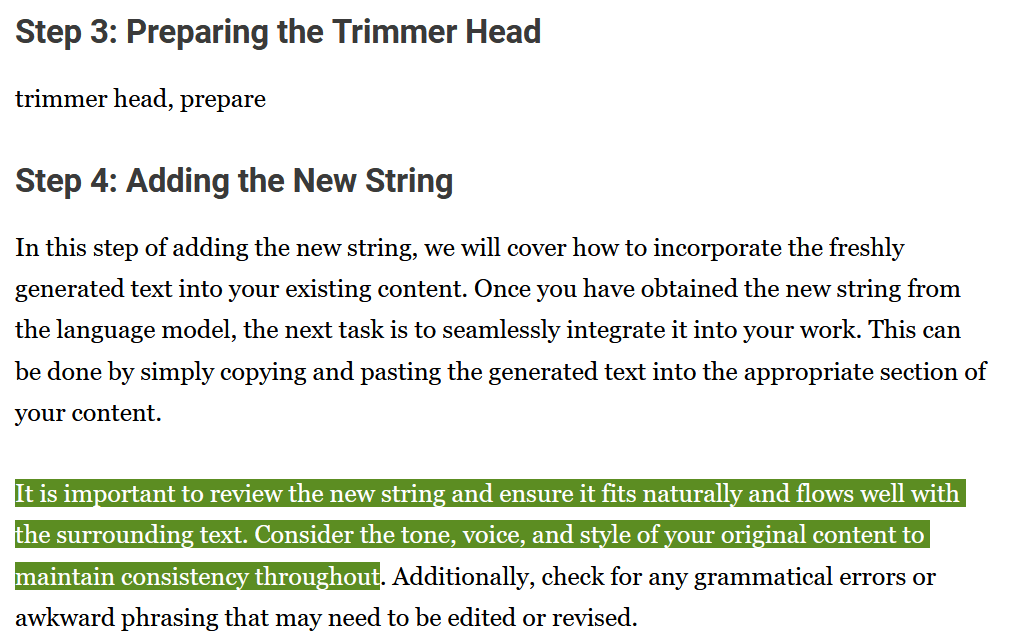This post is a spiritual successor to LLMs are good coders, useless writers.
After getting steadily worse for years, the experience of searching the web just hit a new all-time low. I clicked on the top non-ad search result and encountered the worst word-salad nonsense I’ve ever seen. It was too perfect not to share.
I had let the small patch of lawn in my yard get knee-high. My reel mower can’t cut grass that tall, so I broke out the old weed whacker I got on the cheap at ShareHouse. It immediately ran out of the cutting string that it came with, so I found myself at the hardware store shopping for a refill.
I didn’t know if I should replace only the string or swap out the whole head. So, standing in Lowe’s, I whipped out my phone and searched it up: “restring toro weed trimmer”
(I winced when my kids started saying “search it up,” but I’ve since come to appreciate it. It avoids centering a corporation, unlike “I Googled it.” And I wasn’t using Google: the DuckDuckGo browser on my phone is, sadly, Microsoft Bing in disguise).
The first non-video result was from “Backyard Lord.” I’ve included screenshots in case that link dies, as it sure ought to.

Looking at it now, the “Pro Tips for Easy Trimming” suffix reeks of LLM garbage, as does the domain “Backyard Lord.” But the listed steps seemed like what I wanted. I clicked on it.
The page started off okay:

But that was the end of the plausible content. The next block was just keywords and mentioned a tennis racket??

The next block contained the prompt for the LLM! All highlighting mine:

From there it becomes free-association insanity. There’s a step-by-step guide … but each step discusses a totally different industry! Step 1, preparation, is about starting a business:

Step 2 is about restringing a guitar:

Step 3 is empty and Step 4 drips with irony as it talks about strings in the context of LLMs:






